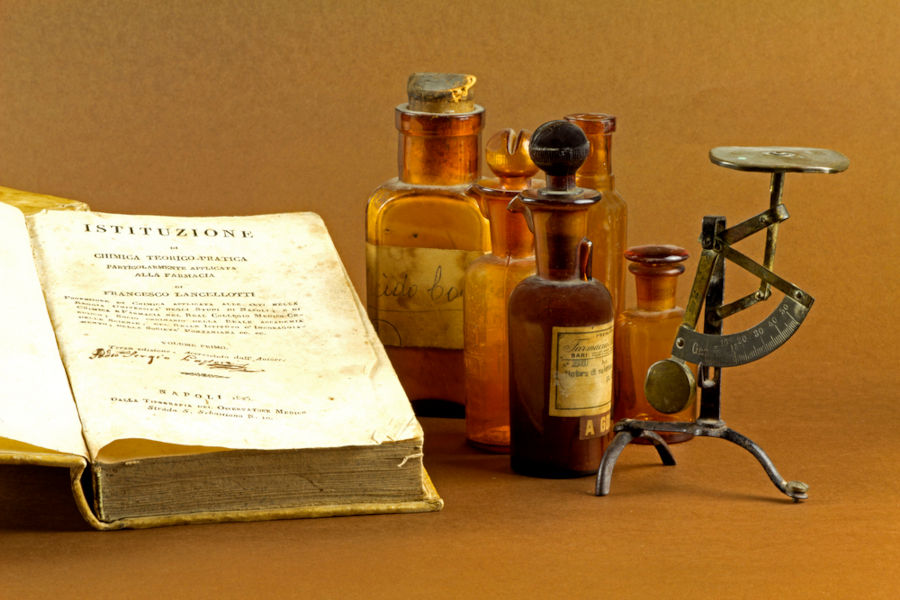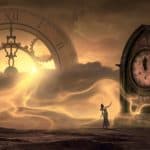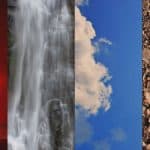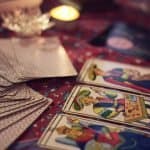At the time of the “Enlightenment” the humanistic, rational, and material perceptions of the world, supported by modern science, were cultivated. At this time, there was the peak of alchemy but also its decline.
Science has made possible more and more useful applications that seemed to make life easier and more efficient. Alchemy was no longer attracted to the brightest minds, and it was getting more and more on the sidelines, declining.
It was only in the 19th century that a significant revival of occultism began to take place in reaction to the changes in science. The discovery of radioactivity showed that the transmutation that science had been refusing for so long was not basically erroneous.
With every discovery of quantum physics, alchemy gained something from its lost glamor and began to be considered at least debatable. Physics has now proved that everything is possible, even alchemy. In recent decades, progress in the field of understanding has led to a general re-evaluation of alchemy.
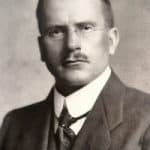
It is unquestionable that the contemporary position of alchemy and its restoration as an extremely complex science of the soul has proven to be very important. This is almost exclusively due to the contribution of psychologist Carl Gustav Jung.
There is no way to look at this issue today without recognizing Jung’s enormous contribution, just as one cannot talk about the occult and not mention Helena Petrovna Blavatsky.
From the late 18th century until the beginning of the 20th century, the study of alchemy was limited to occultists and historians of science. From the very first moment of his scientific career, the Swiss psychologist Carl Gustav Jung began to study alchemy, which was unknown to him.
Referring to the period of his inner experiences that fueled his research on this issue between 1912 and 1919, he wrote: “First of all I had to find evidence of the historical placement of my inner experiences. So I had to answer the question, at what point in the story these particular elements appeared?
If I was not able to figure out such data, it would be impossible for me to realize my ideas. For this reason, my contact with alchemy was indisputable, since it provided me with the necessary historical bases that were missing until then “
In the early 1920s, Jung realized that many of the key alchemy symbols appeared in the dreams of his patients. The nervous collapse he had suffered a few years ago had already made him realize the mythical world of what he called archetypes, powerful images stemming from the “collective unconscious” and common to all people.
In 1926 Jung saw a very important dream. He felt to be transported back to a time in the 17th century and saw himself as an alchemist devoted to the Great Work.
A few years ago he, along with other psychoanalysts of his time, had been enchanted by the work of Herbert Zeilberger, who was one of Freud’s students. Zeilberger published in 1914 a paper on the psychoanalytic implications of alchemy. This work had a very lukewarm reception from Freud himself and maybe that was why Zilberger finally committed suicide.
Based on the natural philosophy of the Middle Ages, alchemy created the bridge that links knowledge of the past with the future and contemporary psychology of the unconscious. In 1928, the prominent German sinologist Richard Wilhelm, who had returned to Europe after a long stay in China, sent Jung the translation of a Taoist alchemical work and asked him to make some psychoanalytic comments on the text.
This work, which became known as “The Secret of the Golden Flower,”(aff.link) became the cause of Jung sinking into the heart of alchemical issues. This work revealed to him the deep relationship between Western and Eastern alchemy, dealing primarily with the symbolic transformation of the human soul.
The Golden Flower of Taoists Immortality does not differ much from the search for the Philosophical Stone, which is the most basic of the issues of western alchemy.
Jung thus not only discovered the connection of modern psychology with alchemy, also discovered and relationships that exist between the West and Taoism traditions. This correlation was made more through archetypal forms and not so through historical data. Richard Willem himself said:
“Chinese wisdom and Dr. Jung have come down from different paths in the depths of the collective human soul, and have discovered realities that are so similar to each other because the truth connects them. This proves that one can reach the truth from any point, provided he has the power to dig deep enough to conquer it. The agreement of the views of the Swiss psychologist with Chinese wisdom proves that they are both right because both are close to the truth “
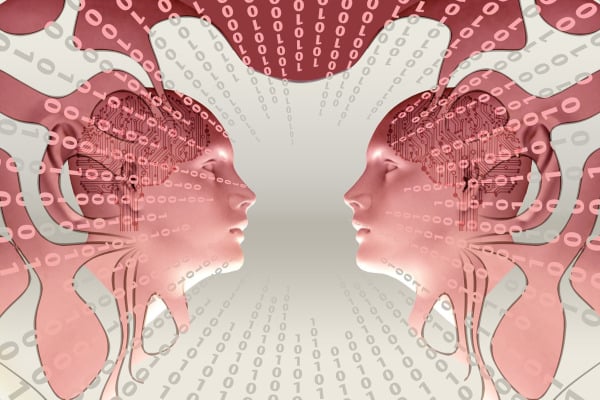
Psychology has shown that the contradictions born out of the agonies of mental regeneration, battle each other in the alchemical reservoir of spiritual transformation, and ultimately unite in an indisputable alignment of opposites. Thus, the Lunar Queen and the Sun King, represented in China with the symbols of yin and yang, are in every being in the representation of the promise of the Philosophical Stone or Golden Flower.
This relationship between the western and eastern traditions seems to Jung to be based on worldwide principles that appear equally in alchemy, Chinese philosophy, and modern psychology.
In this way, Jung discovered an underground connection between the soul of the western and eastern peoples. He had stated on this issue: “The real reason for my commentary was the attempt to build a bridge of psychological understanding between the western and the eastern world “
In 1935, after many years of study and internal transformation, Jung presented the findings of his research for the first time. This presentation was made in villa “Eranos” in Ascona. In his speech entitled “ Dream Symbols and the Individuality Process “, Jung introduced the alchemical symbolism to the dreams of some of his contemporaries, arguing that alchemy continues to exist in modern thinking just as it existed in ancient Alexandria or the Middle Ages.
A year later, in the same place, he presented his work “The idea of Redemption in Alchemy “. The audience listened to him enchanted, and it was the moment when the hermetic silence broke and the knowledge of alchemy began to gain more and more believers.
His studies and lectures on alchemical symbolism were gathered in his book “ Psychology and Alchemy “(aff.link). The book, richly illustrated by numerous unpublished until then alchemical images, was published in 1944 and has since remained in circulation. Its effect was significant and presented alchemy as an object of study in depth.
Jung proved that all alchemical works present a great consistency and complexity of ideas and images, despite the seemingly enigmatic and often contradictory language. This, he argues, cannot be a coincidence.
“A symbolism as rich as alchemy always owes its existence to a sufficient cause and never to a mere curiosity or game of imagination.” The alchemists, as he realized, did not deceive or simply enjoy, but they were investigating something of immense importance. The most important of all his studies was “Paracelsus Spiritual Phenomenon”.
In his work, Jung argued that in his life man possesses two sources of Knowledge working to save him. The first is called “Lumen Dei”, which is the light that comes from God Himself, and the second is called “Lumen Naturae”, that is, the light hidden within the matter and forces of Nature.
While the divine light descends and appears in the mystery of Incarnation, natural light should first be released with the help of alchemy to make it a compelling force.
The world, according to the Paracelsus, contains the divine light (life), but this sacred substance is caught in a mechanical trap that is controlled by a kind of creation that he called “Hylaster” (from the Greek words “Ύλη”: matter and “Αστέρι”: star).
Jungian Archetypes Diploma Course
- Certified Course
- Accredited Course
- 10 Modules
- Lifetime Access
- Study Group Access
Use “LIGHTWARRIORSLEGION466” code for 70% off.
The large trap that captures light consists of four elements: earth, water, fire, and air. The role of alchemy is to “break” these traps and cause an initial state of creative chaos that will result in the composition of opposites as a supreme union. In this supreme union, Jung said, the imprisoned light is released and reaches the point of its highest manifestation.
Although statements such as the above are apparently reported in the material universe and Nature, Jung discerned within them a model of the physical and physical view of human nature. The efforts of the alchemists focused on the liberation of the spirit or the mental energy that is imprisoned within a body, which could become energy available to fulfill the greater mission of the human spirit.
The study of alchemy inspired Jung with the concept of personalization, the release of the individual from his psychic labyrinth, and the solution of the personal psychodrama.
His work with Austrian psychiatrist Sigmund Freud in sexual psychology helped him to understand the erotic side of alchemy, the Chymical Wedding, with an emphasis on uniting the opposites. In his essay ” The Psychology of the Transference “(aff.link) we meet one of the most exciting explorations in the psychology of alchemy.
In this study, Jung used ten images to illustrate the process of completing the Great Work of the Alchemists, where the twin powers of King and Queen appear in a series of secret erotic relationships that result in the creation of an androgynous creature called “the noble Empress”.
Jung uses the word ‘transfer’ as a psychological synonym for love, whose role, both in interpersonal relations and in-depth psychological analysis, is to soothe the greatest sorrows of life and injuries. The sequence of images begins with a sparkling source symbolizing the awakened energy of transformation and continues with the encounter of the king with the Queen, who are dressed, but eventually, they end up removing their clothes.
In this way, the lovers face each other to come to a union with the “naked truth”. Then the lovers are immersed in an alchemic bath, thus allowing the power of love to embrace their conscious “ego” and erase their logical and earthly thoughts.
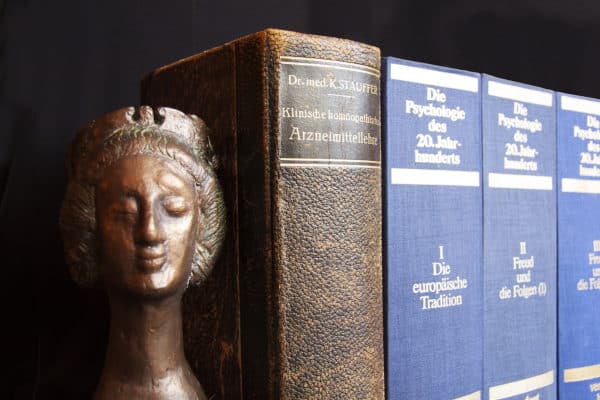
In this state of the passionate association, the psychosexual union takes place. But, beyond expectations, this compound initially creates a new androgynous form that eventually dies. The spiritual consequence of love is not viable and dying, disintegrates. And here is precisely what faith and persistence need to complete the process.
The soul of androgynous plasma does not abandon the process of transformation. Going up to the sky, to a higher level of consciousness, it sinks into the light of the sky and eventually returns to its mortal body, and the regenerated creature now stands upright in all its supernatural glory.
A new creature is born reflecting the fruit of love, the transformed consciousness of lovers, which is now an uninterrupted unity. The alchemy of love has fulfilled its triumphant mission.
This Jung essay is a wonderful primer for the psychological approach to alchemy. It is, in fact, to deposit a profound knowledge of the psychological mechanism of love through the process of harmonizing all opposites, an emotional, mental, physical, and metaphysical process.
Although many alchemists and mystics accuse him of alchemy limitation in purely psychological models, we must say that Jung acknowledged that alchemy is concerned not only with the analysis of man but also of Nature itself. He was more interested in how the soul responds to the puzzlement of existence, and less to the Nature and purpose of Creation.
Jung studied human psychology rather than life. Instead, the object of an alchemist’s research is life itself and its relationship with her, the intensive and in-depth study of which reveals that the alchemist and life is one and the same, wholeness.
From this point of view, Jung’s view of alchemy is limited to a psychological perception, although modern alchemist Professor Manfred Junius argues that in the last years of his life, Jung had made a lab for practical work.
His alchemy is of interest and his intuition impressed many of his work, which eventually gathered in his book “Psychology and Religion“(aff.link). Jung never stopped emphasizing the uniformities and differences between the alchemical icons and Christianity, describing not only the relationship that exists between the Philosophical Stone and the image of Christ but also the relationship between Christianity and alchemy.
“Alchemy,” he said, “has a counterbalance to the mainstream of Christianity, just as a dream works in the conscious behavior of the person dreaming …” Other important Jung’s books on alchemy are “Alchemical Studies“(aff.link) and the monumental and final work of “Mysterium Coniunctionis “(Mystery of the Union)(aff.link), in which he presented his final conclusions from his many years of dealing with alchemy.
In this work, he deals with the reflection of the psychosomatic mystery that the alchemists of the past called “Unus Mundus” (one world), and explores the nature of opposites, especially male and female, as represented in alchemy with the Sun and the Moon, or the Red King and the White Queen.
He argued that at the roots of the whole of existence, there is a place where the physical and the spiritual create a transcendental union. The phenomena of synchronicity and some unexplained mysteries, their nature being either physical or mental, appear to derive from this unified state.
It is almost certain that this strange area of mystery is the real state of the archetypes, which are projected into the soul while in reality, they lie outside it.
While the tension between the opposites remains the great functional mechanism of expression, life, and transformation; the whole process seems to operate within the framework of a unified model of the world where matter and spirit, the King and the Queen, appear as views a psychotic kingdom of reality.
Jung also states that the world is a reflection of the inner, soul, and that virtually every person is responsible for everything that happens in the outside world. This is the key to the real importance of mankind as a microcosm. As above, so below, as within, so without.
Check out our recommendations at “Occult Bookshelf” and many free resources at our “Free Library“
♦ If this article resonates with you, please join our newsletter by using the forms on this website so we can stay in touch.
Stay in Touch
 Join our newsletter by using the forms on this website or click here!
Join our newsletter by using the forms on this website or click here! Follow us on Google News
Follow us on Google News Follow us on Facebook
Follow us on Facebook
Featured image from Depositphotos

